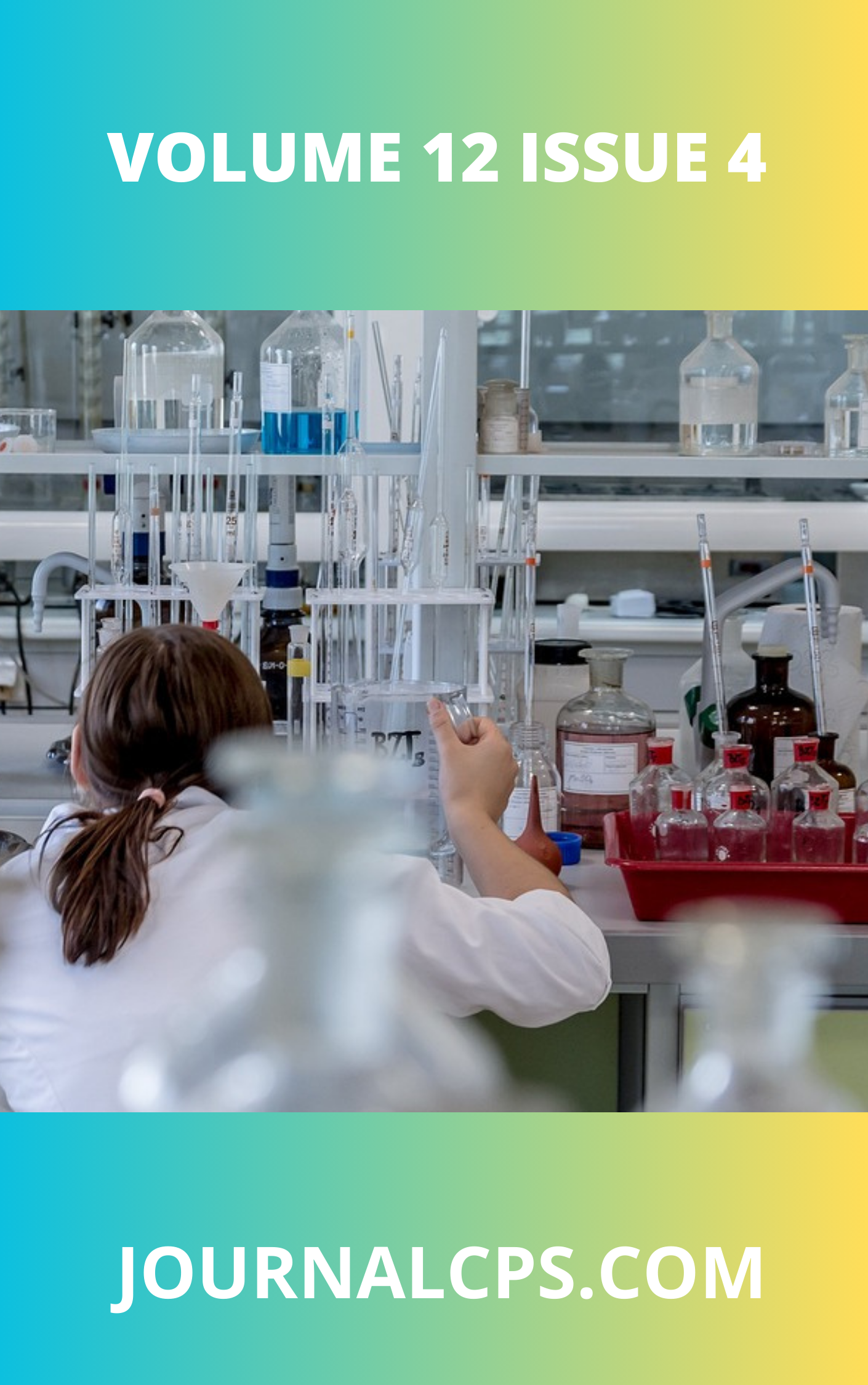SYNTHESIS, SPECTROSCOPIC CHARACTERIZATION AND BIO-INVESTIGATION of N-(2-furylmethylidene)-1,3, 4-thiadiazole-2-amine and its Iron (III) COMPLEXES
Keywords:
Schiff base, Metal complex, Antimicrobial activity, Minimum inhibitory concentration, Spectroscopic analysisAbstract
This study investigates the antimicrobial activity of a Schiff base and its corresponding metal complex, comparing their effectiveness against various bacterial and fungal strains. The Schiff base exhibited moderate antibacterial activity against Bacillus subtilis with a 13 mm inhibition zone but was inactive against Escherichia coli, Enterobacter aerogenes, Klebsiella pneumoniae, Pseudomonas aeruginosa, and Staphylococcus aureus. Upon metal coordination, the complex lost activity against B. subtilis but demonstrated a 16 mm inhibition zone against Proteus mirabilis, indicating a selective enhancement in antibacterial action. Minimum inhibitory concentration (MIC) and minimum bactericidal concentration (MBC) data further confirmed that the metal complex inhibited P. mirabilis at 0.9 mg/mL and exhibited bactericidal activity at 1.2 mg/mL, while remaining inactive against other bacteria. Antifungal tests showed no inhibition of Aspergillus niger, Candida albicans, or Penicillium notatum, suggesting that the metal complex lacks antifungal potency. Spectroscopic analysis revealed structural modifications upon metal coordination, with IR spectra showing shifts in the C=N stretching frequency from 1630.87 cm⁻¹ in the Schiff base to 1631.83 cm⁻¹ in the complex. The appearance of new bands at 550 cm⁻¹ and 450 cm⁻¹ confirmed metal-nitrogen and metal-oxygen interactions. The metal complex exhibited a higher melting point (212–214°C) compared to the Schiff base (121–123°C), indicating increased thermal stability. Despite these structural changes, the complex did not exhibit broad-spectrum antimicrobial activity, possibly due to limited cellular uptake, redox activity, or insufficient interaction with bacterial metabolic pathways. These findings suggest that metal complexation can selectively alter antimicrobial activity rather than universally enhancing it. The study underscores the importance of ligand design and metal coordination in tuning biological activity. Future work should explore variations in metal centers, ligand modifications, and mechanistic studies to improve antimicrobial potency.
Downloads
Published
Issue
Section
Similar Articles
- Ifeanyi E. Otuokere, J. C. Anyanwu, K. K. Igwe, Ni(II) Complex of a Novel Schiff Base Derived from Benzaldehyde and Sulphathiazole: Synthesis, Characterization and Antibacterial Studies , Communication In Physical Sciences: Vol. 5 No. 2 (2020): VOLUME 5 ISSUE 2
- S. Sani , I. T Siraj , Copper(II) and Zinc(II) Complexes Synthesized by Green Mechanochemical Method and their Antimicrobial Studies , Communication In Physical Sciences: Vol. 7 No. 2 (2021): VOLUME 7 ISSUE 2
- M. E. Khan , Synthesis, Spectroscopic Characterization and Biological Studies Of 2-{[(2-hydroxy-5-nitrophenyl)methylidene]amino} nicotinic acid and Iron (II) complexes , Communication In Physical Sciences: Vol. 5 No. 2 (2020): VOLUME 5 ISSUE 2
- Uchechukwu Susan Oruma, Pius Oziri Ukoha, Collins U. Ibeji, Lawrence Nnamdi Obasi, Obinna C. Okpareke, Ebubechukwu N. Dim, Klaus Jurkschat, Ponnadurai Ramasami, Synthesis, Spectroscopic, Biological and DFT Studies of 2,4,6-Tris(4-Carboxyphenylimino-41-Formylphenoxy)-1,3,5-Triazine and its Trinuclear Dy(III) and Er(III) Salen Capped Complexes , Communication In Physical Sciences: Vol. 7 No. 3 (2021): VOLUME 7 ISSUE 3
- Ifeanyi E. Otuokere, J.C. Anyanwu, K.K. Igwe, Synthesis, Spectra and Antibacterial Studies of 4-{[(E)-phenylmethyl- idene]amino}-N-(1,3-thiazol-2-yl)benzenesulfonamide Schiff Base Ligand and its Ni(II) Complex , Communication In Physical Sciences: Vol. 7 No. 2 (2021): VOLUME 7 ISSUE 2
- Uchechukwu Susan Oruma, Pius Oziri Ukoha, Lawrence Nnamdi Obasi, Synthesis, Characterization and Biological Studies of Trinuclear Ce(IV) Salen Capped Complex with 5-amino-2,4,6-tris(4-carboxybenzimino)-1,3-pyrimidine , Communication In Physical Sciences: Vol. 5 No. 3 (2020): VOLUME 5 ISSUE 3
- Nsikanabasi Ekerete Nkom, Ededet Akpan Eno, Atim Sunday Johnson, Idongesit Bassey Anweting, SYNTHESIS AND CHARACTERIZATION OF 4- AMINO-3-MERCAPTO-5-METHYL-1, 2, 4 -TRIAZOLE AND ITS MIXED- LIGANDS COMPLEX WITH Cd (II) IONS , Communication In Physical Sciences: Vol. 12 No. 6 (2025): Volume 12 Issue 6
- Felicia Ndidi Ejiah, Tolulope Mojisola Fasina, Neerish Revaprasadu , Folasade Tolulope Ogunsola, Oluwole Babafemi Familoni, Investigation of Some Novel Schiff Base Copper(II) Complexes of 2-aminophenol and ortho Substituted Benzaldehydes as Potential Antiseptic Agents , Communication In Physical Sciences: Vol. 11 No. 2 (2024): VOLUME 11 ISSUE 2
- I. I. Ibrahim, A. Absulazeez, A. Usman, M. U. Badeggi, A. I. Muhammad, Comparative Studies on Phytochemical Constituents Andantimicrobial Activity on Three Onion Species , Communication In Physical Sciences: Vol. 7 No. 4 (2021): VOLUME 7 ISSUE 4
- G. U. Kaior, N. J. Nwodo, U. S. Oruma, A. Ibezim, A. E. Ochonogor, K. K. Onyia, Nnamdi L. Obasi, Structural, Antimicrobial and in Silico Studies of Some Schiff Bases of Trans-paramethoxycinnamaldehyde Derivatives , Communication In Physical Sciences: Vol. 5 No. 4 (2020): VOLUME 5 ISSUE 4
You may also start an advanced similarity search for this article.




